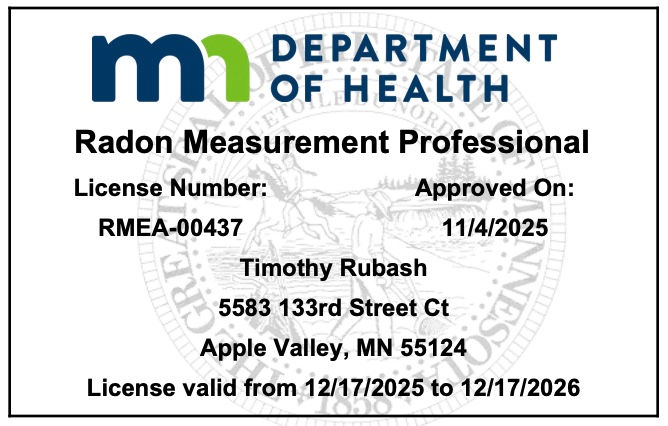Continuous Radon Measurement
- timrubash
- Nov 13, 2023
- 2 min read
Updated: Jun 6
Continuous radon measurement equipment plays a crucial role in safeguarding indoor air quality and protecting individuals from the harmful effects of radon gas. Radon, a colorless and odorless radioactive gas, is a natural byproduct of uranium decay in the soil. Prolonged exposure to elevated radon levels can pose serious health risks, including an increased likelihood of lung cancer. To ensure the effectiveness of radon mitigation efforts, it is essential to calibrate measurement equipment regularly and adhere to state and federal standards.
Calibration is the process of adjusting and verifying the accuracy of radon measurement devices. Proper calibration is vital for obtaining reliable data on radon levels in indoor environments. Over time, equipment may experience drift or deviation from the intended measurement accuracy. Regular calibration helps correct any discrepancies, ensuring that the readings obtained are precise and trustworthy. This is particularly important given the sensitivity of radon detection – even small inaccuracies can lead to significant misinterpretations of indoor radon concentrations.
Compliance with state and federal standards is equally critical in maintaining the integrity of radon measurement practices. I follow the MN Department of Health and the National Radon Proficiency Program (NRPP). Different regions may have specific regulations and guidelines regarding acceptable radon levels and the use of measurement devices. Staying abreast of these standards ensures that professionals in the field are employing the most up-to-date and effective methods for radon detection. It also helps in providing accurate information to homeowners, allowing them to take informed actions to mitigate radon risks.
Continuous monitoring is a key aspect of effective radon measurement. Unlike short-term tests, continuous monitors provide real-time data, offering a more comprehensive understanding of radon fluctuations throughout the day and across seasons. Regular calibration of these continuous monitors ensures that they consistently deliver accurate and reliable results, enabling prompt intervention if radon levels exceed recommended thresholds.
In the United States, the Environmental Protection Agency (EPA) provides guidelines for radon measurement and mitigation. Adhering to these federal standards is essential for professionals in the radon industry to maintain credibility and ensure the safety of occupants in homes and other indoor spaces. I am required to have annual calibrations on the equipment that I own. Both of my Continuous Radon Monitors (CRM) came back recently and passed. I just set them up in my lower level to measure levels in a room I did two years ago.
This commitment to precision and adherence to standards is fundamental to creating healthier indoor environments and safeguarding public health from the dangers of radon gas.






Comments